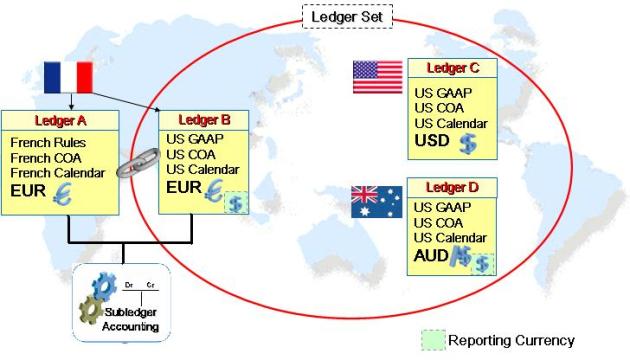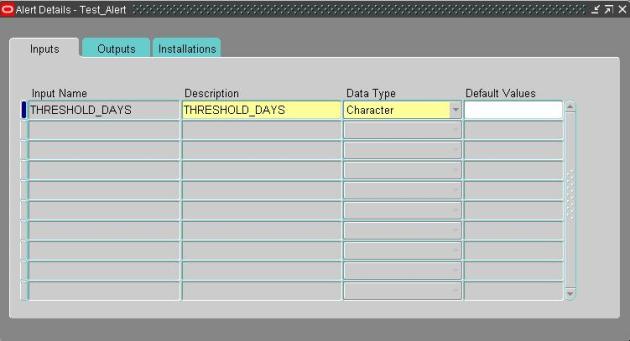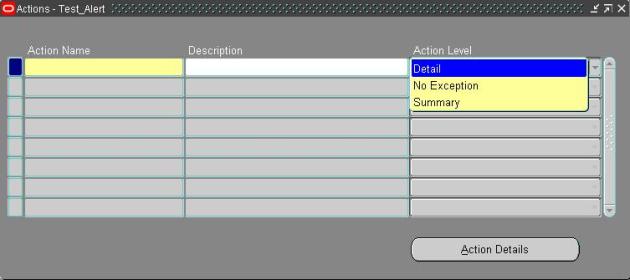FAQs in Account Payable
How many types of Invoices we can create in Oracle Payables?
A. Standard
B. Debit Memo
C. Credit Memo
D. Pre-Payment
E. Expense Report
F. Withholding Tax Invoice
G. Miscellaneous Invoice
Describe the 4-Way Matching?
2 – Way Matching: The Invoice Amount Should match with PO, (Invoice with PO)
3 – Way Matching: The Receipts Should match with Invoice, (Invoice, PO with Receipts)
4 – Way Match: The Goods Should match with Inspection/Accepted (Invoice, PO, Inspections & Receipts)
2-Way (Invoice to Purchase Order)
Quantity billed vs. quantity ordered on shipment line
Invoice unit price vs. purchase order line unit price
3-Way (Invoice to Purchase Order and Receipt)
2-Way match criteria AND
Quantity billed vs. quantity received
Item = Receipt Required
4-Way (Invoice to Purchase Order and Receipt and Inspection)
3-Way match criteria AND
Quantity billed vs. quantity accepted
Note: Quantity accepted = (Quantity received – quantity rejected)
Item = Inspection Required
How many Holds we have?
System Holds: Tax, Quantity Match, Po amount with Invoice Amount
Manual Holds: Invoice Limit, Hold on Invoice
Can you Release Manual Holds? If Yes, How?
Yes. Holds – Release Holds
How many ways you can pay the Invoice Amount?
Apply in Full
Schedule Payments
Installments
What is the difference between Debit and Credit Memo?
Debit Memo will raise the Customer
Credit Memo will raise the Vendor
Can you create a Duplicate Vendor ?
No
Vendor Number Should be Generate Automatic or Manually?
Both, Manual And Automatic
How many key flexfields are there in Payables?
No key flexfields in PO,AP
What are Payment Terms?
Payables uses payment terms to automatically calculate due dates, discount dates, and discount amounts for each invoice you enter. Payment terms will default from the supplier site. If you need to change the payment terms and the terms you want to use are not on the list of values, you can define additional terms in the Payment Terms window.
What are the Payment Methods available?
• Check – You can pay with a manual payment, a Quick payment, or in a payment batch.
• Clearing – Used for recording invoice payments to internal suppliers.
• Electronic – You generate an electronic payment file that you deliver to your bank to create payments. Use Electronic if the invoice will be paid using EFT or EDI.
• Wire – Used to manually record a wire transfer of funds between your bank and your supplier’s bank.
What are the line types of an Invoice?
Item: Item lines capture the details of the goods and services billed on your invoice.
Freight: Freight lines capture the details of your freight charges.
Miscellaneous: Miscellaneous lines capture the details of other charges on your invoices such as installation or service.
Tax: Payables integrates with Oracle E-Business Tax to automatically determine and calculate the applicable tax lines for your invoices.
What are the Invoice Distribution Types?
Item
Freight
Miscellaneous
Tax
Withholding
Prepayment
What are Holds in AP?
Holds can be placed by the system and some holds can be placed manually. Holds prevent payment and, sometimes, accounting of an invoice. Payables applies holds to invoices that fail the Invoice Validation process. Release holds from invoices to allow payment and accounting entry creation for the invoices.
What are the Interface Tables in AP?
AP_INVOICES_INTERFACE
AP_INVOICE_LINES_INTERFACE
AP_INTERFACE_CONTROLS
————————————–
AP_SUPPLIERS_INT
AP_SUPPLIER_SITES_INT
AP_SUP_SITE_CONTACT_INT
AP_SUPPLIER_INT_REJECTIONS
What is the API to cancel single AP Invoice?
AP_CANCEL_PKG.AP_CANCEL_SINGLE_INVOICE
What is the API to find invoice status?
AP_INVOICES_PKG.GET_APPROVAL_STATUS
Give some of the Oracle Payables interface?
a) Credit Card Transaction Interface
b) Invoice Import Interface
c) Payables Open Interface
d) Purchase Order Matching
What are the key tables where supplier bank information are stored?
IBY_EXTERNAL_PAYEES_ALL
IBY_EXTERNAL_PAYERS_ALL
IBY_EXT_BANK_ACCOUNTS
IBY_PMT_INSTR_USES_ALL
What is meant by with-holding tax invoice?
A separate tax invoice generated for withholding tax amount. Later this invoice will be knocked of when making the payment made to the authority.
What are all the Modules Interacting with AP?
Cash Management
Oracle iExpenses
General Ledger
Oracle Assets
Subledger Accounting (R12)
HRMS
Project Accounting
Purchasing/iprocurement
Global Accounting Engine (11i)
What are the mandatory setups in AP?
1- Financial Options
2- Define Suppliers
3- Define Payment Terms
4- Define Payment Methods
5- Define Banks and Banks Accounts And Banks Accounts Documents
6- Open AP Accounts Periods
What is pay date basis?
The Pay Date Basis for a supplier determines the pay date for a supplier’s invoices.
• Due
• Discount
What is the difference between quick payment and manual payment?
Quick Payment: It allows you to make a single payment against one or more invoices at a time to one supplier through payables.
Manual Payment: This is the process of entering the check details which has been paid manually in some emergency requirements into the payment form and selecting the invoices of the concerned supplier and check whether the total of the invoices and the paid amount at the header are same and save.
What is terms date basis?
Terms Date Basis is to calculate due date.
Due date is calculated 4way. Eg: payment term is 30days
- Due date = Sysdate + 30days
- Due date = Invoice date + 30days
- Due date = Goods Receive Date + 30days
- Due date = Invoice Received date + 30days
How you will transfer payables to general ledger?
When the payable accounting entries are created, then run the program called ‘Payables Transfer to GL’ Program, which sends the invoice entries and payable entries to GL interface. Then submit a request called Journal import to import journal entries to GL.
What are Aging Periods?
Aging periods are nothing but the periods that we setup to control and maintain the supplier outstanding bill towards the invoice. From this we can able to study the due date of the supplier form the generation of invoice.
What is a “Mixed” Invoice and how do I enter one?
Mixed Invoices are invoices or credit/debit memos for which you can perform both positive and negative matching to purchase orders and to other invoices.
For example, you can enter an invoice for -$100 with Invoice Type Mixed. You can match to an invoice for $-200, and match to a purchase order for $100.
To enter a Mixed invoice:
1. Enter the invoice or credit/debit memo in the Invoices Summary, and enter Mixed as the invoice Type. You can enter either a positive or negative invoice amount.
2. Match to purchase orders, and/or invoices.











